Hoops
Chalk Talk: A Breakdown of Brad Underwood’s Spread Offense
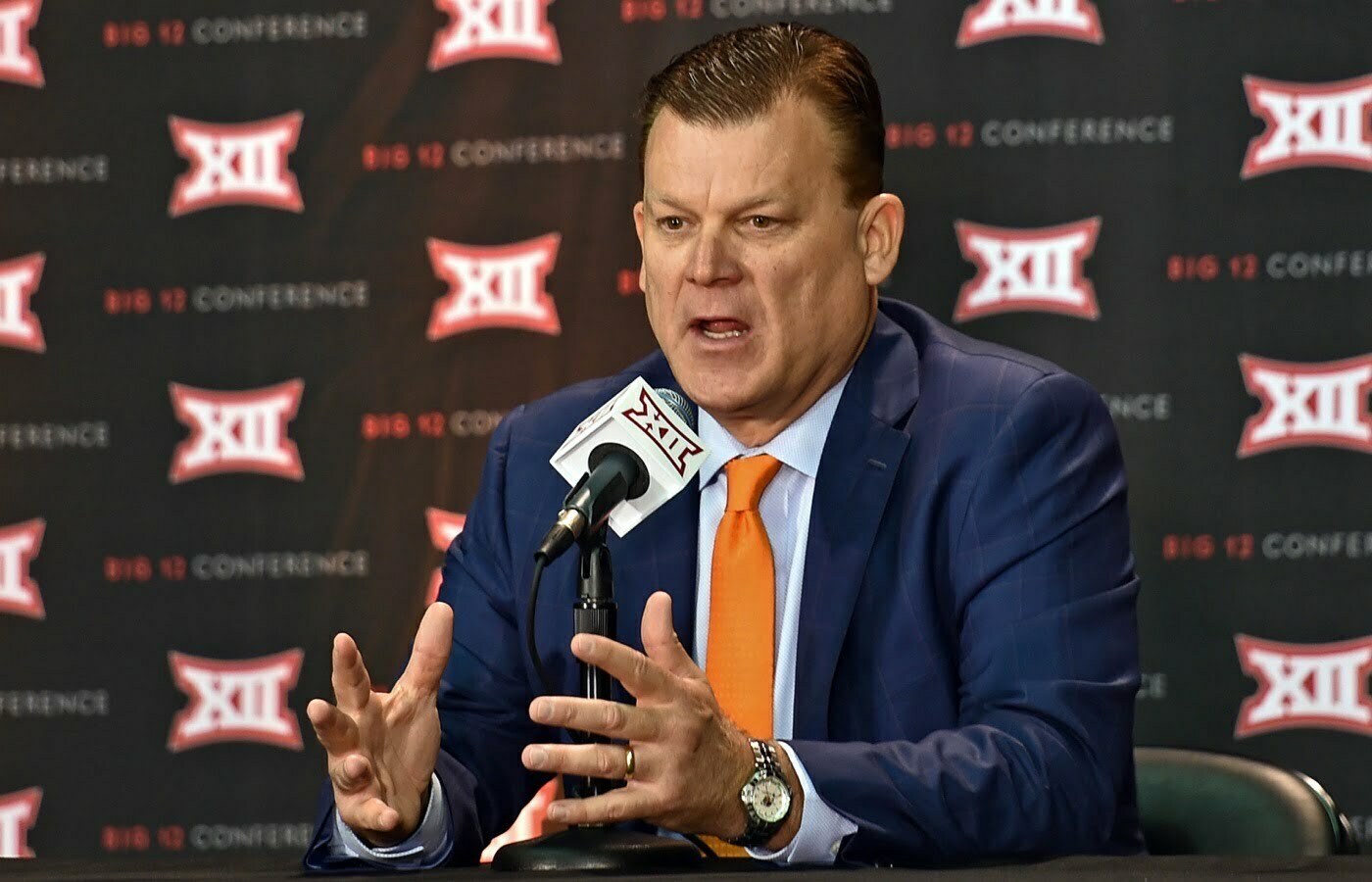
New Oklahoma State head coach Brad Underwood brings with him a proven reputation and an impressive 89-14 record. But one of the most important things that he brings, and one that not many people think about, is his unique offense.
At SFA, Underwood used a couple of motion sets, mostly his base spread set, and frequently mixed in some set plays and ball screens. His offense helped the Lumberjacks finish with an outstanding 28-6 record, and he’s proven that it works even against the highest levels of competition in the NCAA Tournament.
In celebration of Underwood’s first official game at OSU today (albeit an exhibition), we’re going to look at the base spread motion set and how it operates.
The spread set features four interchangeable guards and one forward. The forward is positioned in the center of the floor with the guards spread around him; the set runs regardless of who starts with the ball.

There are a number of ways that the offense can be initiated, but here’s the base way. The play starts with the ball swinging from one side to another, eventually ending up in the hands of one of the corner guards. This activates the start of the base spread action.
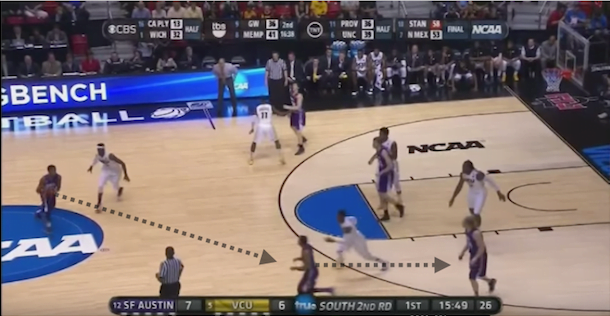
Once the ball is in the corner, the guard at the top of the key cuts to the basket off a back screen from the forward.
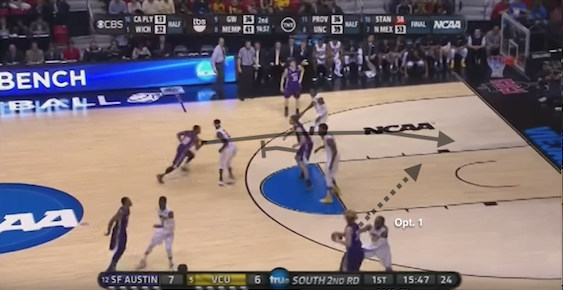
The guard has the option to pass to the cutter or hold onto the ball to continue the action.
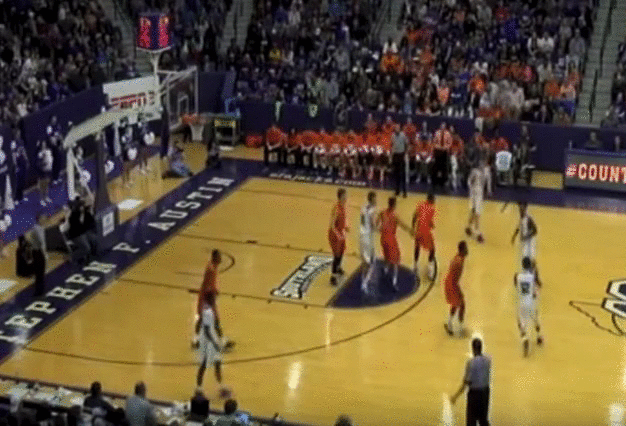
If the guard isn’t open off the cut, then the sequence continues and the guard in the opposite corner cuts to the basket.
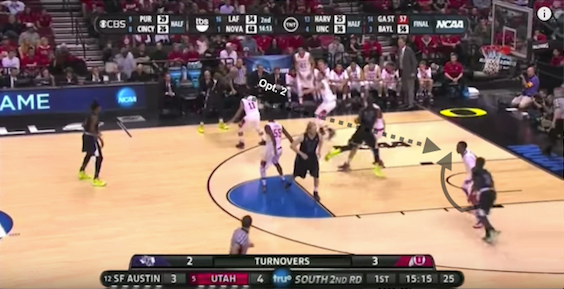
The guard will sometimes receive a screen from the forward, but most of the time he just attempts a duck-in for post position. This is a viable option when the guard is able to seal his man away from the basket for the lob.
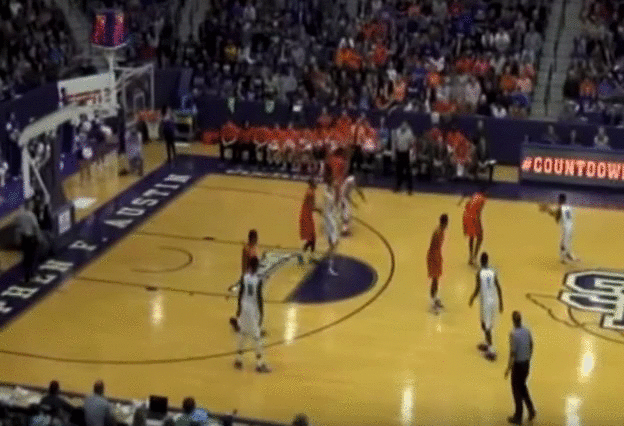
If that isn’t open, then the guard with the ball swings it to the top of the key. Sometimes the cutting guard can set a brush screen on the forward, who can then step back to his high post position for an open shot.
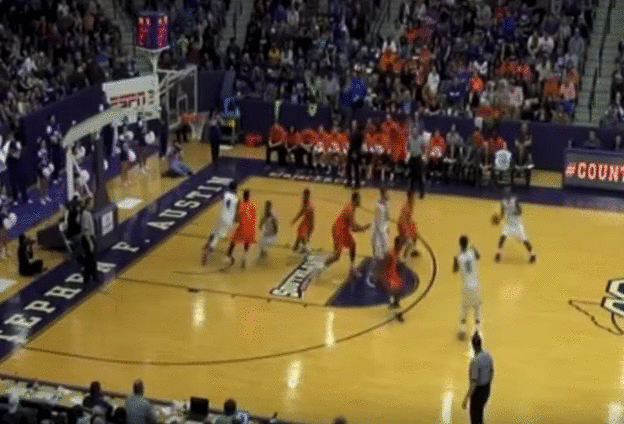
Once the ball is at the top of the key, the new ball handler can initiate pinch post action between him and the forward on the high post.
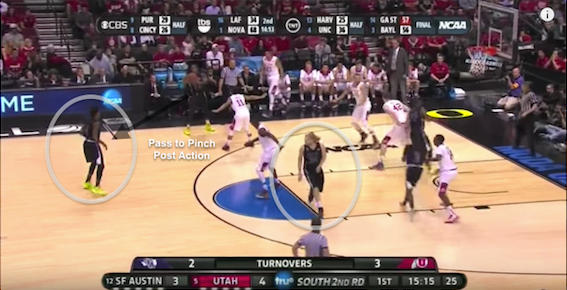
The pinch post action, which has long been a staple in motion offenses (and most notably the triangle), is a simple two-man game between the guard and the forward. The guard initiates the action by passing the ball to the forward on the post and running in anticipation for the dribble pitch or handoff.
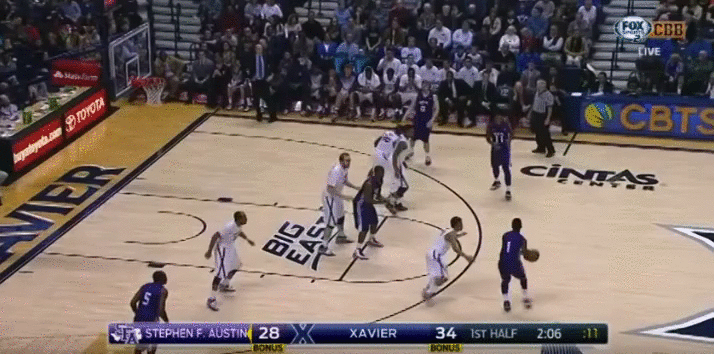
The second option is for the guard to initiate a clearout ball screen by dribbling toward the forward.
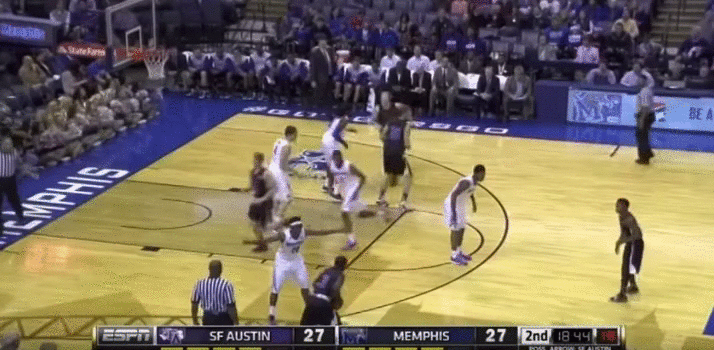
The weak-side guards all rotate up and fill the space, but they can also set screens on each other for effective off-ball action.
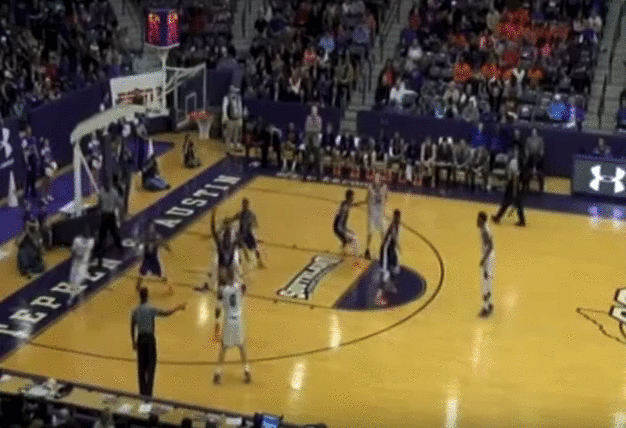
If nothing is there off the pinch post, the guard passes the ball back to the top of the key and the ball is swung to the opposite corner to reset the action all over again.
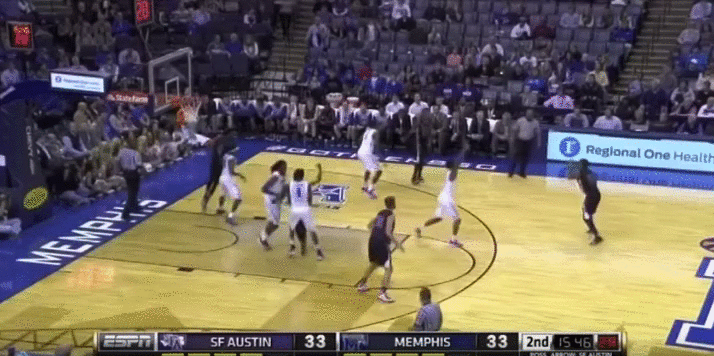
This spread set is effective because it gives the offense so many options to score. Not only that, but the opportunities come from all types — on cutters, on post action, on three pointers and even on ball-screens. Every possible way of scoring is included in the set in some way.
And here’s the beauty — if nothing works, the motion is designed to seamlessly reset itself. Additionally, the motion sets and set plays can be meshed together so that if one doesn’t work, it immediately transitions into the other.
Whether Underwood will unveil this offense in exhibition is yet to be seen, but it’s safe to say that the Cowboys should have it down by conference play. For a team whose biggest offensive criticism in the Ford era was ball movement, this change to the spread motion is a drastic one, but it’s one for the better.
What do you think of Underwood’s new offense? Leave your opinions below in the comments!

-
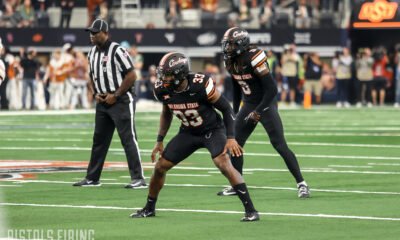
 Football5 days ago
Football5 days agoOklahoma State Linebacker Donovan Stephens Enters Transfer Portal
-
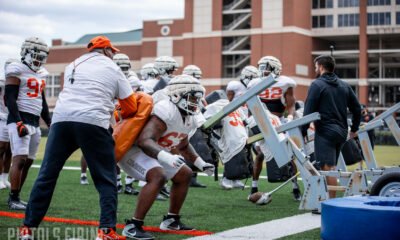
 Football5 days ago
Football5 days agoSpring Football: A Defensive Line Switch That Could Utilize the Cowboys’ Playmakers
-

 Recruiting5 days ago
Recruiting5 days agoOSU Wrestling: Top Portal Prospect Wyatt Hendrickson Visits Oklahoma State
-
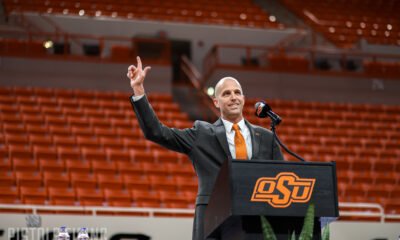
 Hoops5 days ago
Hoops5 days agoReport: Steve Lutz’s Deal Worth $13.5 Million over Five Years






